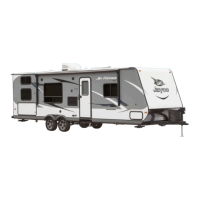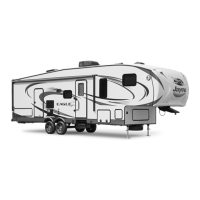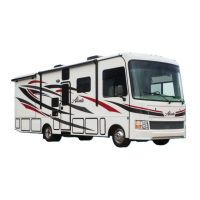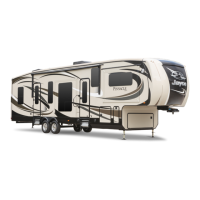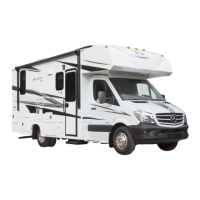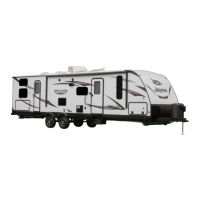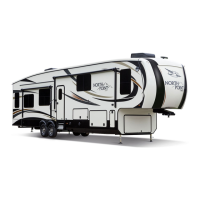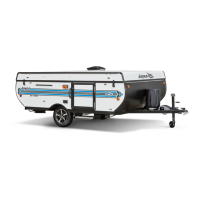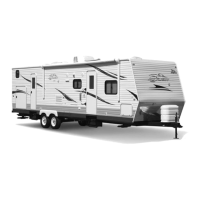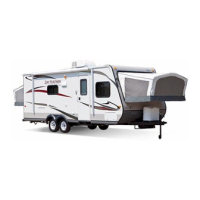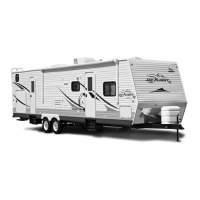3-8
SWAY CONTROL (CUSTOMER SUPPLIED)
Sway control devices are available to reduce the sway produced by crosswinds,
air displacement caused by other vehicles passing you in transit, incorrect weight
distribution, excessive speed, the RV tires dropping onto the shoulder of the road,
etc. You will also want to discuss this purchase with your Dealer.
The use of a sway control device will help to control the side-to-side movement
and keep sway in check.
Suggestions for sway situations:
Slowly ease your foot off the accelerator.
Turn the steering wheel as little as possible. Natural lag time reaction when
counter-steering to correct sway could possibly make it worse.
If the trailer is equipped with electric brakes, using the hand control will help to
keep the vehicles aligned.
As soon as possible, stop to determine the cause of the sway. Check all
equipment and load distribution. If the problem cannot be solved immediately,
contact your Dealer for a service appointment (travel at a much reduced
speed on your way there).
TRAVEL TRAILER WEIGHT DISTRIBUTING SYSTEM (CUSTOMER SUPPLIED)
A weight distributing hitch system provides a more stable tow vehicle/RV
combination. This system will spread the weight evenly to distribute it to the tow
vehicle front and rear axles and the trailer axle. Consult with your dealer to
familiarize yourself with the operation and requirements of the weight distributing
hitch system. Be certain your tow vehicle can carry the hitch weight.
FRONT DECK (IF SO EQUIPPED)
If your RV is equipped with a front deck for hauling extra cargo, make sure that
you stay within all weight limits for the deck and the loading ramps. It is critical for
proper handling and trailer maintenance that you weigh your RV completely
loaded before heading out on your trip. Make sure to unload the front deck before
unhitching your RV from the tow vehicle.
WARNING
1400 lb (635 kg) distributed load capacity per pair/700 lb (318 kg) distributed
load capacity each ramp. Do not ride vehicle on ramps. Chains & straps
must be secured to limit ramp movement. Use as a loading ramp only.
Ramp surface is slippery when wet. Do not stop between rungs. If ramp is
bowing while loading, remove load immediately. Keep body parts clear of
hinge pinch areas. Use on level and stable surfaces only. Failure to follow
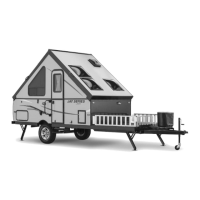
